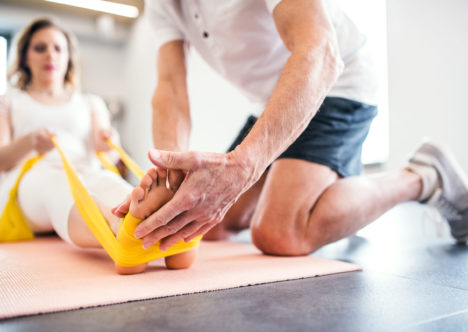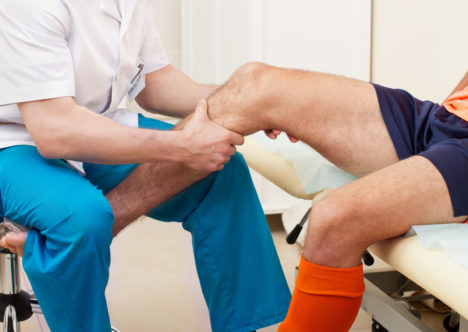Use our convenient online scheduler to book an appointment now.

Subacromial impingement treatment can be either with or without surgery. Fortunately, most of those who have isolated impingement syndrome get better with nonoperative treatment. For those who don’t, operative subacromial impingement treatment is usually successful.
Subacromial Impingement Treatment: Nonoperative Approach
As I discussed in an earlier post, the symptoms of impingement syndrome, not associated with some other disorder of the shoulder, usually develop due to repetitive overhead activities. With these activities, the subacromial bursa gets pinched between the undersurface of a bone on the top of your shoulder (acromion) and your rotator cuff. As a result, it becomes inflamed (subacromial bursitis). This process is often associated with some dysfunction of the shoulder. Usually the dysfunction is a loss of motion due to tightness of the lining of the back of the shoulder. As a result, nonoperative subacromial impingement treatment is directed at stopping and correcting these issues.
The main components of nonoperative subacromial impingement treatment are:
1. Relative rest
Absolute rest is often not required. Usually avoiding painful overhead activities is sufficient. Essentially, you should avoid any activities that cause pain during the activity or afterwards. The goal is to avoid making the problem worse and to provide an opportunity for the inflammation to settle down.
2. Inflammation reduction
Inflammation is what causes the pain. So it must go away for you to feel better. There are two ways to potentially accomplish this:
1. Oral Antiinflammatories (NSAIDs or Steroids)
2. Antinflammatory Injection(s)
NSAIDs (Nonsteroidal Antiinflammatory Drugs) and steroids are medications taken by mouth. These don’t instantly remove the inflammation and therefore don’t instantly remove the pain. They work slowly over time. In many people, these may be effective in eliminating the inflammation. In others, they may not.
When an oral medication is insufficient, an injection of an anti-inflammatory medicine directly into the bursa often can do the trick. These can be given right in your doctor’s office. Although they have a bad reputation as being painful, for most patients this is not the case. Usually patient’s are surprised at how little pain these injections cause. The usual medicine injected is a mixture of a steroid, which is a strong anti-inflammatory medication, and lidocaine, a numbing medication. This mixture is better known as cortisone.
3. Physical Therapy
Physical therapy is critical to successful nonoperative subacromial impingement treatment. The tight tissue at the back of the shoulder or any other dysfunction that exists, along with overhead activities, is usually responsible for causing isolated impingement syndrome. So if the dysfunction is not cured, the problem usually persists. Even if the inflammation does resolve but the dysfunction is not corrected, the bursitis, along with the symptoms, often returns. This is where physical therapy comes in. A skilled therapist will not only be able to identify the particular dysfunction in your shoulder, but they will also often be able to correct it as well.
Subacromial Impingement Treatment: Operative Approach
When nonoperative treatment fails, as it does in about 10-15% of patients, then surgery can usually fix the problem. The operative approach to subacromial impingement treatment is an arthroscopic procedure. During this surgery, the inflamed bursal tissue is removed. Additionally, the space for the bursa and rotator cuff are sometimes narrowed. In these cases, enlarging this space is required. This is accomplished by performing an acromioplasty. An acromioplasty essentially “raises the roof” of the subacromial space by removing a spur on the undersurface of the acromion. This procedure is a very safe and often highly successful.
Impingement syndrome can often be very painful. It is one of the most common shoulder problems seen. Fortunately, subacromial impingement treatment, whether nonoperative or operative, is usually very successful. So if you suffer from this common problem, it is a good idea to see your Orthopaedic shoulder specialist and get on track to getting your shoulder better.
Join our Mailing List
TCO provides patients with orthopedic problems the trusted resources and patient-centered advice they need to “Feel Better. Move Better. Be Better.”
© 2024 Town Center Orthopaedics | All Rights Reserved


